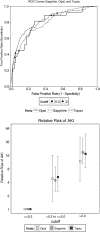Cell-cycle arrest and acute kidney injury: the light and the dark sides
- PMID: 26044835
- PMCID: PMC4703048
- DOI: 10.1093/ndt/gfv130
Cell-cycle arrest and acute kidney injury: the light and the dark sides
Abstract
Acute kidney injury (AKI) is a common consequence of systemic illness or injury and it complicates several forms of major surgery. Two major difficulties have hampered progress in AKI research and clinical management. AKI is difficult to detect early and its pathogenesis is still poorly understood. We recently reported results from multi-center studies where two urinary markers of cell-cycle arrest, tissue inhibitor of metalloproteinases-2 (TIMP-2) and insulin-like growth factor-binding protein 7 (IGFBP7) were validated for development of AKI well ahead of clinical manifestations--azotemia and oliguria. Cell-cycle arrest is known to be involved in the pathogenesis of AKI and this 'dark side' may also involve progression to chronic kidney disease. However, cell-cycle arrest has a 'light side' as well, since this mechanism can protect cells from the disastrous consequences of entering cell division with damaged DNA or insufficient bioenergetic resources during injury or stress. Whether we can use the light side to help prevent AKI remains to be seen, but there is already evidence that cell-cycle arrest biomarkers are indicators of both sides of this complex physiology.
Keywords: acute kidney injury; cell-cycle arrest; insulin-like growth factor-binding protein 7; tissue inhibitor of metalloproteinases-2.
© The Author 2015. Published by Oxford University Press on behalf of ERA-EDTA.
Figures




Comment in
-
Cell-cycle arrest biomarkers: the light at the end of the acute kidney injury tunnel.Nephrol Dial Transplant. 2016 Jan;31(1):3-5. doi: 10.1093/ndt/gfv323. Epub 2015 Sep 11. Nephrol Dial Transplant. 2016. PMID: 26361800 No abstract available.
References
Publication types
MeSH terms
Substances
LinkOut - more resources
Full Text Sources
Other Literature Sources
Research Materials
Miscellaneous

